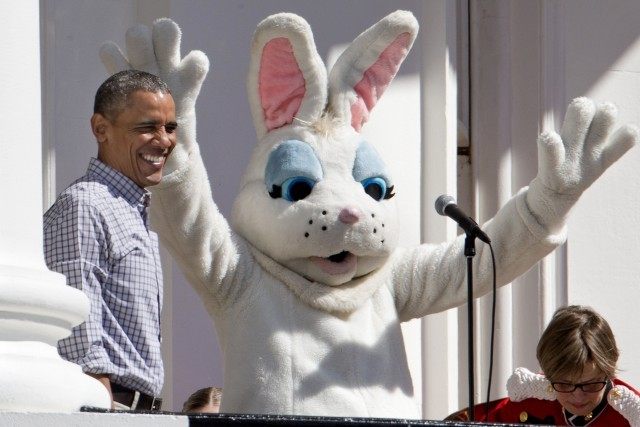The Brookings Institution found that President Obama is using bad data to justify spending an extra $120 billion on “Preschool for All.”
Research by the left-leaning think tank discovered that advocates of the policy, which would extend a new entitlement for all low- and moderate-income four-year-olds over the next decade, had inappropriately included three-year-olds’ attendance to artificially reduce the percentage of children that are attending preschool before kindergarten.
The Obama administration has been pointing to reports from organizations like the ultra-liberal Economic Policy Institute, whose study, “Inequalities at the Starting Gate,” claims that only 55 percent of four-year-olds in America attend some type of voluntary preschool. The claim is based on data taken from the National Center of Education Statistics for children who entered kindergarten in the 2010-2011 school year,
The EPI’s study also claims that preschool attendance dramatically improves with higher socio-economic status by family income, with preschool attendance at 69.9 percent among the top quintile four-year-olds, versus 44.3 percent attendance for the lowest socio-economic status quintile.
There are already state-level free voluntary preschool programs in Oklahoma and Florida that cost less than $3,000 per child per year. But the Obama Administration and its union allies want an entitlement that would be similar to the over $17,000 per-child-per-year program in Boston’s public schools.
The Washington D.C. based Brookings Institution has never been called a bastion of conservative rabble-rousers. But the 99-year-old organization, which focuses on being an “advocate for effective and efficient public service” by bringing science to the study of national public policy, decided to audit EPI’s analysis that is serving as the Obama Administration’ justification for launching “Preschool for All” as a wildly expensive new entitlement program.
Given that pre-K attendance is voluntary, and not every family chooses to send their four-year-old to a center-based program, Brookings designed a scientific analysis to determine if there is a potential “unmet need” based on differences between existing enrollment rates for the highest socioeconomic quintile of families compared to those for the lower four socio-economic status quintiles.
Using the same National Center of Education Statistics data that EPI supposedly used, Brookings found that 69 percent of American children who entered kindergarten in the 2010-2011 schoolyear had voluntarily attended a preschool program the year before. The reason for the 14-point attendance difference is that the White House and EPI included voluntary attendance in preschool by three-year-olds to drag down the percentage. Brookings argues that this “may be seriously misleading.”
The Brookings authors added, “Reporting the average of the participation rate for the two age groups brings to mind the joke about the statistician who puts his head in an oven and his feet in a freezer and reports that on average he feels fine (or in this case, doesn’t have sufficient access to preschool).”
Brookings also equated the White House’s methodology of “Combining three- and four-year-olds to estimate preschool uptake is akin to combining 17- and 18-year-olds to estimate college enrollment rates.”
Brookings did find that rates of voluntary preschool attendance do vary considerably by the socio-economic status of parents. But Brookings’ documented attendance rates were higher for all socio-economic quintiles than the figures the White House has been bandying about:
- First quintile = 83 percent
Second quintile = 77 percent
Third quintile = 68 percent
Fourth quintile = 59 percent
Fifth quintile = 50 percent
Brooking argues that the correct calculation “provides a very different impression of unmet need” than those studies produced by the White House.”
Brookings points out that the federal government already spends about $20 billion a year on “early learning and child care.”
Given that preschool participation rates are higher than the White House admits, and that universal access to voluntary preschool is already available for almost every four-year-old in America, Brookings estimates it would only cost $1.9 billion a year to ensure that the lowest four socio-economic quintiles have universal access to preschool, versus the $12 billion per year demanded by the White House.

COMMENTS
Please let us know if you're having issues with commenting.